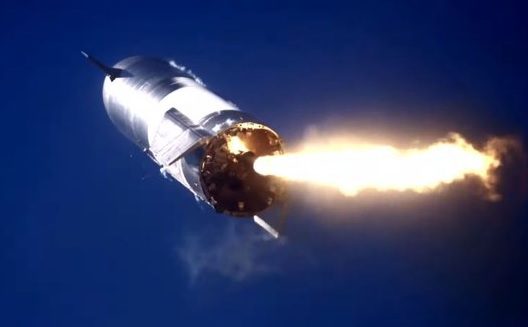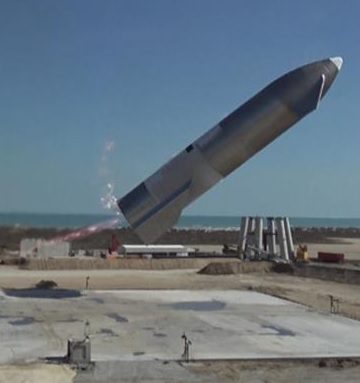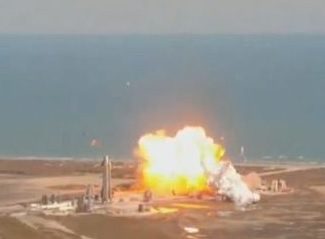Just as the Starship SN8 test launch ended in an explosive landing failure in December – after all the hard bits of the flight – so the same has happened to its successor, Starship SN9. After a few days’ delay due to a flight safety waiver dispute with the Federal Aviation Authority (FAA) (the previous flight apparently went ahead without official FAA permission), this test launch was finally allowed to take place. The suborbital endo-atmospheric launch on 2 February was initially flawless after lift-off at 2025 GMT, and SN9 reached an altitude of 10 km before switching to its horizontal configuration for descent. However, the subsequent flip-over manoeuvre into its planned engine-down orientation did not go as planned – one of the two SN9 engines explosively failed causing debris to fly off. The engine failure resulted in an over rotation of the launch vehicle.
With an incorrect orientation, and with insufficient engine power to slow the rocket to a gentle touchdown, the now leaning rocket stage struck the ground in a fireball. The commentator on the flight, SpaceX engineer John Insprucker, drily noted: “We’ve just got to work on that landing a little bit.”
While the test was a disappointing failure, SpaceX engineers were at least relieved that the nearby propellant storage facilities and the next test rocket due for launch, the Starship SN10 parked close by, were undamaged.
Comment by David Todd: This crash and the previous SN8 explosive landing failure show that the FAA was right to be wary of the safety implications of these test flights. With respect to the previous SN8 crash, it is incredible that SpaceX went ahead with it despite the FAA denying a waiver designed to overcome safety issues. SpaceX really does seem to be a law unto itself and deserves a major fine – at the very least – for not following FAA orders.
Space News (Jeff Foust) gives more details on the SN9 launch licence violation here











